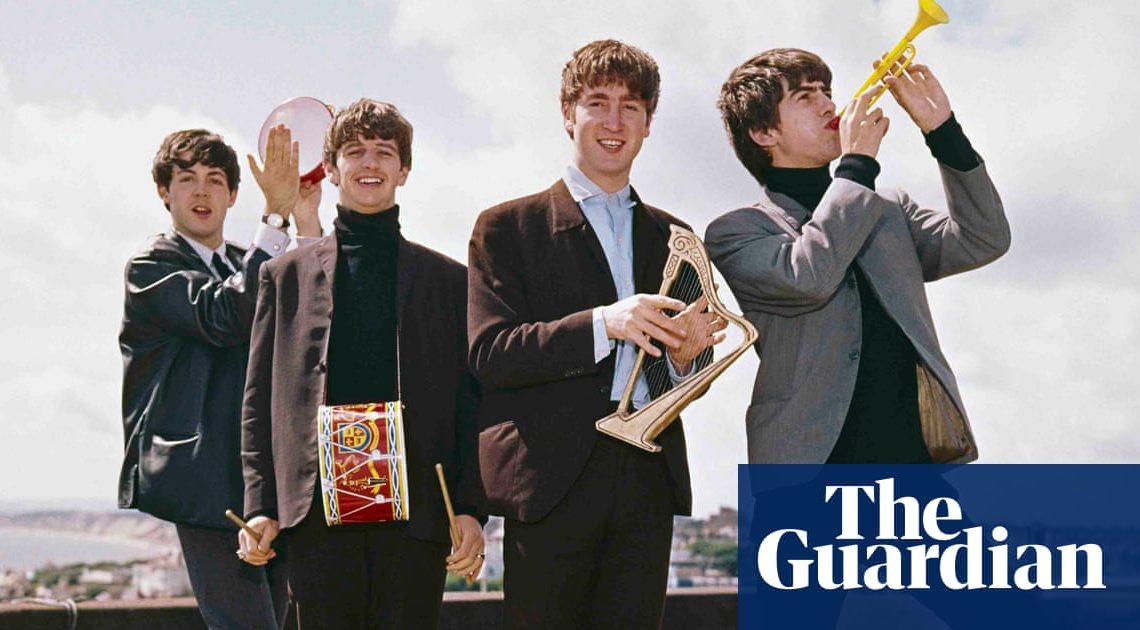
The Beatles’ singles ranked!
September 28, 2019As Abbey Road turns 50, we rate the Fab Fours 22 UK singles, which dominated the charts in the 1960s and changed pop for ever
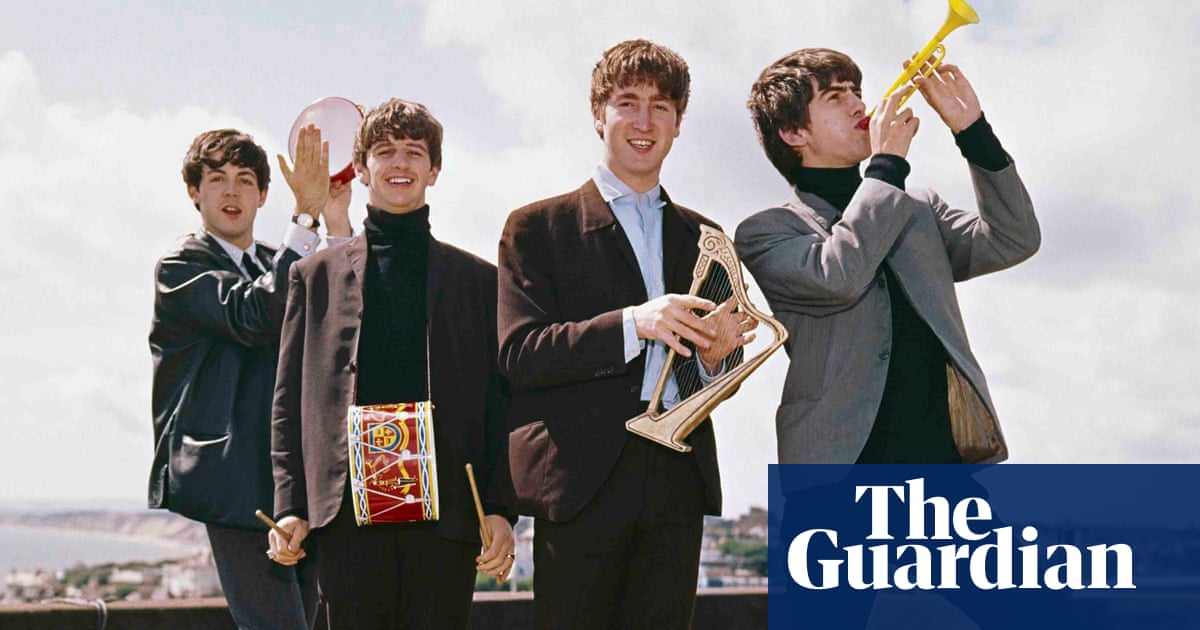
22. The Ballad of John and Yoko (1969)
John Lennon once convened a meeting of the Beatles to inform them that he was Jesus: the charmless Ballad of John and Yoko is that crazed egotism and messiah complex wrought into song. Paul McCartney does his best to enliven a pretty wan bit of music with his contributions playing bass, piano and drums but its an uphill struggle.
21. From Me to You (1963)
A step back from the thrills of Please Please Me, From Me to You was a hit written to order, and it is tempting to say it shows. On the plus side, Lennon sings the whole thing in a voice far more rasping and anguished than the song warrants, as if he is approaching the lyrics cutesy sentiment with a distinct roll of the eyes.
20. Love Me Do (1962)
It is hard to imagine how raw and unique Love Me Do sounded in late 1962, in a singles chart dominated by yodeling Frank Ifield and Acker Bilk: the writer Ian MacDonald compared the impact of its dry, northern British sound to that of kitchen-sink realism in cinema and theatre. That said, the Beatles would swiftly outstrip the songs simplicity and modest charm.
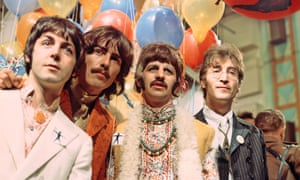
19. All You Need Is Love (1967)
There is a sense in which All You Need Is Love is less interesting as a song than as an artefact: the Summer of Love zenith of the hippy dream captured, just before it curdled into disillusionment. But does a hint of Lennon sarcasm slip through the net in the way he delivers the words its easy?
18. Yellow Submarine (1966)
In the UK, at least, the Beatles tended not to issue singles from albums. That they broke their rule for Revolvers lovable but slight childrens song Yellow Submarine rather than Taxman, Here There and Everywhere or Eleanor Rigby, which was relegated to the B-side seems faintly mind-boggling.
17. Cant Buy Me Love (1964)
Less dramatic and combustible than She Loves You or I Want to Hold Your Hand, Cant Buy Me Love was key to establishing the Beatles cross-generational appeal: on the one hand it had a raw energy that recalled skiffle, on the other, its rhythm vaguely suggested swing, provoking a number of parent-friendly jazz covers, not least by Ella Fitzgerald.
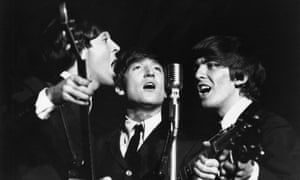
16. Lady Madonna (1968)
Pops post-psychedelic mood was set by the earthiness of the Bands hugely influential debut Music from Big Pink. McCartneys Fats Domino homage later recorded by Domino himself fitted cheerily with the shift, although the fuzzed-out guitars of George Harrison and Lennon suggested something slightly more tumultuous, in keeping with the increasingly troubled mood of 1968.
15. Hello, Goodbye (1967)
Lennon was reportedly furious that I Am the Walrus was demoted to the B-side of Hello, Goodbye. While McCartneys song certainly doesnt have the venomous energy or experimental edge of Lennons, it has got a power of its own; as a masterclass in supremely catchy songwriting, it works perfectly.
14. Please Please Me (1963)
Far more dynamic and electrifying than its predecessor Love Me Do, the Everly Brothers-inspired Please Please Me saw the Beatles harness the raucous power of their live performances in the studio. There is still something breathlessly exciting about the songs call-and-response of come on, come on: it sounds like it is willing a new pop landscape into being.
13. I Feel Fine (1964)
The sparkling I Feel Fine marks a transition between the carefree excitement of the early Beatles singles and the drug-fuelled experimentation to come: the former represented by the songs mood and basic pop lyrics, the latter by the (possibly Who-inspired) buzz of feedback that opens it and the intricate guitar figure that runs throughout the verse.
12 Let It Be (1970)
In 1970, the charts were sprinkled with songs that sounded hymnal, like morning-after elegies for the 60s, not least Simon & Garfunkels Bridge Over Troubled Water. Completed at the last-ever Beatles recording session, Let It Be fitted perfectly: its sheer loveliness and reassuring sentiment is an end-credits finale to their career.
11. I Want to Hold Your Hand (1963)
By now, the Beatles were on a roll. From its stammering opening guitar riff onwards, there is something really audacious about I Want to Hold Your Hand, a song written with the specific intention of making the US sit up and take note. The result was so irresistible, so sensational in its sudden melodic swoops and dynamic shifts, it succeeded in changing the face of American pop entirely.
10. A Hard Days Night (1964)
Heralded by the most famous opening chord in rock history, concluded with a Harrison guitar part that essentially invented the Byrds, A Hard Days Night is a joy that cannily plays on Lennon and McCartneys different personalities. The former sings the verse, gruffly protesting about work, the latter chimes in with the bridge, singing about happy domesticity.
9. Get Back (1969)
Whatever the problems with the notoriously fractious Get Back sessions of 1969, a lack of strong material wasnt one of them. The song that gave the sessions their title was McCartneys doomed dream of returning the Beatles to their roots in musical form: punchy, hard-driving R&B, leavened by knowingly daft lyrics. It has got an utterly beguiling sense of ease, at odds with the fraught circumstances that birthed it.
8. Help! (1965)
I really was crying for help, Lennon later noted, highlighting the key to the songs potency. On one level, it sounds exuberant, richly melodic and thick with harmonies, on another, there is a very real sense of desperation about the lyrics and the vocal, the first sign of Lennons soul-bearing that would consume his initial solo albums.
7. Something/Come Together (1969)
Harrison finally gets a song on a single, albeit a double A-side: it says a great deal about the quality and elegance of Something that it outshone even Come Together, Lennons greatest contribution to Abbey Road. The other Beatles agreed: for evidence of the attention they lavished on it, listen to McCartneys extraordinary bass playing.
6. We Can Work It Out/Day Tripper (1965)
Its addictive riff aside, there is something unappealingly snooty about Day Tripper: the sound of an acid initiate sneering at someone insufficiently hip to have turned on, tuned in and dropped out. We Can Work It Out, though, is magical: its exasperated repetitions a very realistic depiction of a domestic row; its arrangement beautifully subtle; its melody perfect.
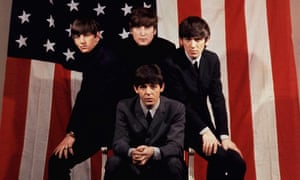
5. She Loves You (1963)
These days, the music of the pre-pot Beatles tends to get unfairly overlooked: a scream-inducing prelude to the real action. That is nonsense: by any standard, She Loves You is a fabulous record. Urgent and explosive, packed to bursting with hooks and idiosyncratic twists, its two and half minutes appear to pass in the blink of eye.
4. Ticket to Ride (1965)
Beatles historians argue over whether Ticket to Ride was the bands first musical response to LSD, but whatever the impetus, it is a spectacular single. Its tumbling drums, droning guitars, self-examining lyrics and mood of stoned languor pointed to the way pop would change over the following 18 months.
3. Paperback Writer (1966)
Its satire of Swinging Londons thrusting ambition is very McCartney-esque gentle and fond, rather than biting but Paperback Writer may be the most straightforwardly exciting of the Beatles mid-60s singles: a supremely tight explosion of distorted guitar riffs, falsetto harmonies and subtle studio tricks. On the flip: the simultaneously thunderous and dreamy psych of Lennons Rain, perhaps the best Beatles B-side of all.
2. Hey Jude (1968)
Philip Larkin once opined that in the mid-60s, the Beatles experimentation lost the typists in the Cavern. With all respect to the old misery, thats rubbish. Despite its boundary-pushing length, Hey Jude is as pervasive as anything they recorded. There is something universal about its gentle, urging optimism; something about its all-together-now coda that defies you not to join in.
1. Strawberry Fields Forever/Penny Lane (1967)
The Beatles press officer Derek Taylor wryly noted that, when the band took LSD, it was a case of four scousers exploring inner space and just finding more and more scouser down there. Certainly, acid was responsible for historys most heightened, extraordinary burst of in-my-Liverpool-home sentimentality. Lennons evocation of his childhood was eerie, ambiguous, ever-changing: an albums-worth of ideas condensed into four astonishing minutes. McCartneys seemed innocent and joyous its mood epitomised by the ecstatic piccolo trumpet solo but Penny Lane was equally hallucinatory. Though she feels as if shes in a play, he sang, she is, anyway: in other words, nothing is real. It is an obvious choice for their greatest single, but Strawberry Fields Forever and Penny Lane have it all. Perfect songwriting, unbelievable invention and daring, wit and warmth: the Beatles in a psychedelic nutshell.
This list does not include EPs, posthumous singles or reunion releases
The four-CD Abbey Road (50th Anniversary) Super Deluxe box set is released on 27 September. Single- and two-disc versions are also available
Quick guide
The best of ‘Ranked!’
Actors playing nightmarish versions of themselves in cinema – ranked!
Michael Caine’s best films – ranked!
The 10 best Glenn Close movies – ranked!
Tom Cruise – top 20 movies – ranked!
Judi Dench – every film – ranked!
Ryan Gosling movies – ranked!
10 best Hugh Grant films – ranked!
Nicole Kidmans top 10 films – ranked!
The best and the worst Jennifer Lopez films – ranked!
All Helen Mirren’s 61 movies – ranked!
Robert Redford’s greatest screen roles – ranked!
Winona Ryder’s 20 best films – ranked!
Movie Santa Clauses – ranked!
Maggie Smith’s 20 best films ranked!
Jason Statham – every film – ranked!
Emma Thompson’s best films – ranked!
Wes Anderson movies – ranked!
The Coen brothers films – ranked!
Stanley Kubrick’s best films – ranked!
Biopics trashed by families, friends and fans – ranked!
Purr evil: cats in movies with hidden agendas – ranked!
Dog weepie movies – ranked!
Top 20 J-horror films – ranked!
Movies that have grossed more than $1bn – ranked!
Palme d’Or winners – ranked!
The scariest horror films ever – ranked!
The best Shakespeare films – ranked!
The 10 best movie shark performances – ranked!
The best Stephen King movies – ranked!
From Trolls to Transformers: toy films ranked!
Worst holidays in cinema – ranked!
Aardman’s 20 best films ranked!
James Bond on film 007’s best and worst movies – ranked!
The 20 best Marvel films – ranked!
Top 10 Merchant Ivory films – ranked!
Pixar – every film ever made – ranked!
Planet of the Apes – the best and worst of the movies – ranked!
Star Wars – every film – ranked!
The 20 best music documentaries – ranked!
The weirdest Brits performances – ranked!
Game of Thrones – every episode – ranked!
Oscar nominees – the weirdest ever – ranked!
Oscar snubs – the 20 greatest ever – ranked!
The biggest Rock & Roll Hall of Fame snubs ever – ranked!
Super Bowl half-time shows – the 10 greatest – ranked!
The best X Factor finalists – ranked!
From Niall Horan’s toast to Russell Crowes jockstrap: celebrity auction items – ranked!
All Abba’s UK singles – ranked!
The Beatles’ singles ranked!
Kate Bush every UK single – ranked!
Every one of Madonna’s 78 singles – ranked!
Missy Elliott’s solo singles ranked!
Prince’s 50 greatest singles ranked!
Queen’s 50 UK singles – ranked!
Taylor Swift’s singles – ranked!
The Who: their UK singles – ranked!
Black Sabbath – every album – ranked!
David Byrne (almost) all of his albums – ranked!
Miles Davis’s 20 greatest albums ranked!
Lil Wayne’s albums – ranked!
Every Mercury prize-winning album – ranked!
Joni Mitchell’s albums ranked!
The Rolling Stones every album – ranked!
10 best Paul Simon albums – ranked!
Bruce Springsteen’s albums – ranked!
Kanye West every album – ranked!
Stevie Wonder’s albums – ranked!
20 greatest breakup songs ever – ranked!
Aphex Twin’s best songs – ranked!
Barry Manilow all his greatest songs – ranked!
Cher’s 30 greatest songs – ranked!
The 30 greatest Disney songs ranked!
Elton John’s 50 greatest songs – ranked!
From Drake to Wet Wet Wet: songs with 10 weeks at No 1 – ranked!
From MC5 to Jeff Mills: the greatest Detroit tracks ever – ranked!
Giorgio Moroder’s 20 greatest songs – ranked!
Nirvana’s 20 greatest songs – ranked!
The best songs from teen movies – ranked!
The best UK garage tracks – ranked!
The greatest banned songs of all time – ranked!
The greatest ever female rap tracks – ranked!
The greatest pop music dance crazes – ranked!
All 43 Spice Girls songs – ranked!
Read more: http://www.theguardian.com/us

